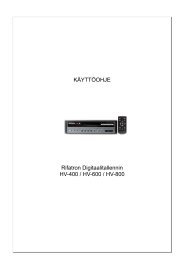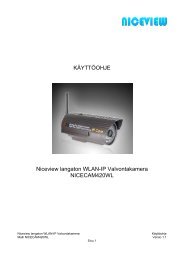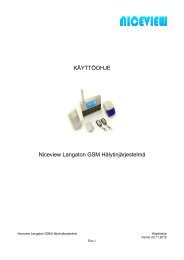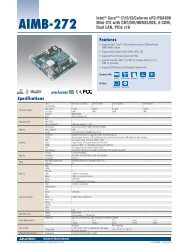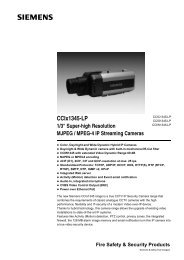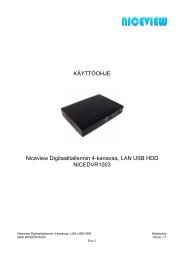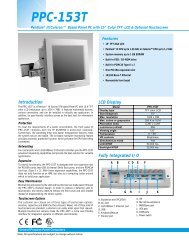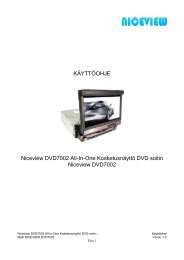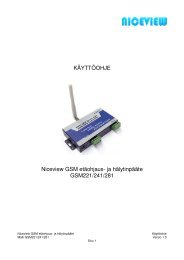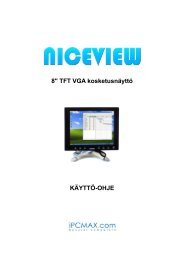You also want an ePaper? Increase the reach of your titles
YUMPU automatically turns print PDFs into web optimized ePapers that Google loves.
Chapter 3 <strong>IVC</strong>-<strong>4300</strong> SDK Programmer Guide<br />
3.1 Introduction to DirectShow Application Programming<br />
A complete documentation about DirectShow application programming can be<br />
found on Microsoft website. If DirectX 9.0b or later SDK is installed, this<br />
documentation is also available from DirectX SDK Help.<br />
The main goal of writing a DirectShow Application is to build a filter graph by<br />
connecting several filters together to perform a given task such as previewing<br />
video or audio, capturing video or audio and multiplexing them to write into a file.<br />
Each filter performs a single operation and passes data from its output pin to the<br />
input pin of the next filter in the graph.<br />
To build a capture graph using a program, the first thing to do is to obtain the<br />
interface pointer of the capture filter. <strong>IVC</strong>-<strong>4300</strong> Video Capture Filter can be<br />
obtained through system device enumerator. After holding an interface<br />
pointer to the capture filter object, use method<br />
IGraphBuilder::AddSourceFilter to add the source filter object to the filter<br />
graph. Use IFilterGraph::AddFilter to add other downstream filters to the<br />
filter graph. After filters are added, call IFilterGraph::ConnectDirect or<br />
IGraphBuilder::Connect methods to connect output pins from upstream filters<br />
to the input pins of the downstream filters. Calling methods<br />
IMediaControl::Run, IMediaControl::Pause or IMediaControl::Stop will<br />
change filter state to running, paused or stopped.<br />
The filters needed for capturing MPEG2 and MPEG4 streams are listed in Chapter<br />
3.2, with detailed information for each filter and its pins. Example filter graphs<br />
for previewing/capturing MPEG2 and MPEG4 streams are illustrated in Chapter<br />
3.3. Chapter 3.4 gives examples of two ways to control device driver.<br />
**Note that the MPEG2/1 decoder recommended is InterVideo video codec, which<br />
is not included in our SDK package. Please refer to InterVideo website<br />
http://www.intervideo.com/ for more information.<br />
3.2 Filter Description<br />
This chapter lists filters necessary to build a filter graph for capturing and/or<br />
previewing MPEG4/2/1 video and audio streams.<br />
3.2.1 Source Filter<br />
<strong>IVC</strong>-<strong>4300</strong> Video Capture Filter belongs to the category of WDM Streaming<br />
Capture Devices. It is actually a kernel-mode KsProxy plug-in. An application<br />
can treat it simply as a filter. Use System Device Enumerator to add this filter to<br />
a filter graph.<br />
Filter Name<br />
Filter CLSID<br />
Filter Category Name<br />
Filter Category<br />
Video Capture Pin Supported Media<br />
Types<br />
<strong>IVC</strong>-<strong>4300</strong> Video Capture<br />
Not applicable<br />
WDM Streaming Capture Devices<br />
AM_KSCATEGORY_CAPTURE<br />
DIVX_MPEG4, MPEG2, MPEG1<br />
<strong>IVC</strong>-<strong>4300</strong> 21



